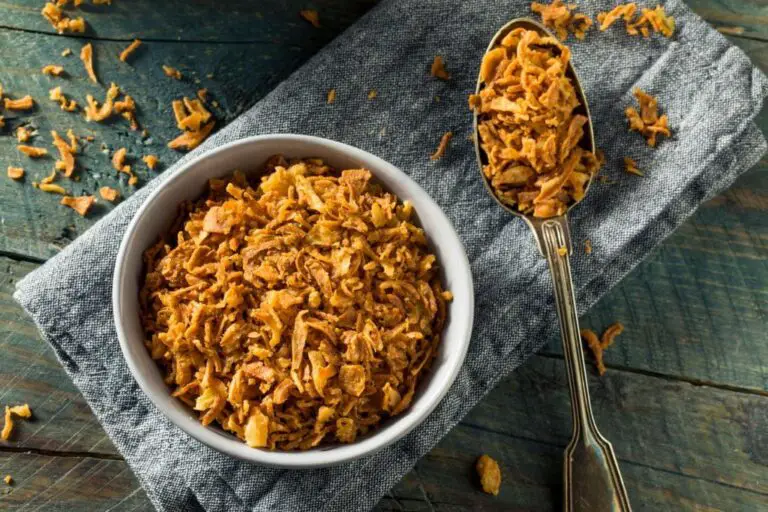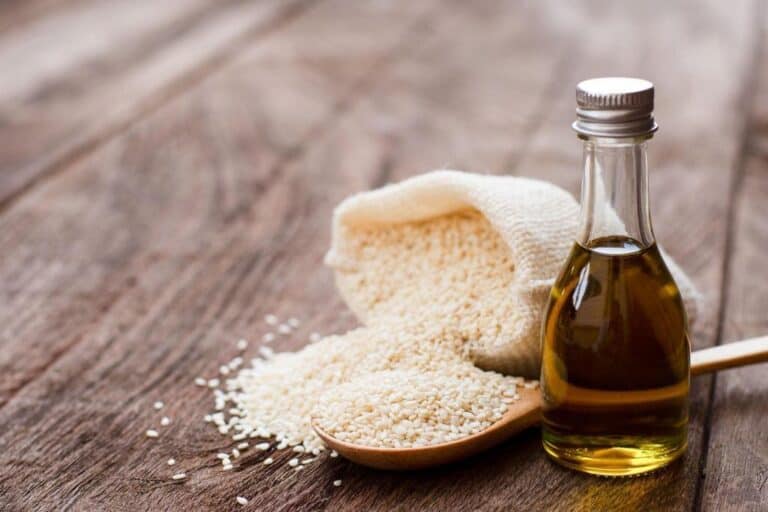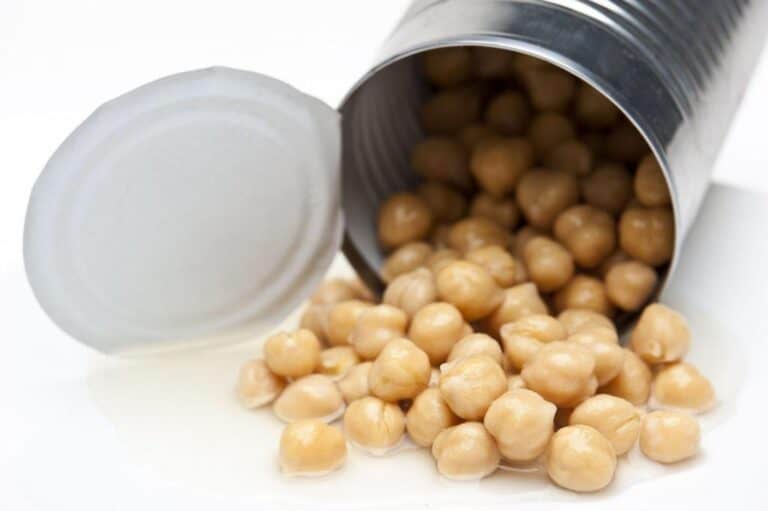Can You Eat the Liquid in Canned Beans? Bean Brine Benefits
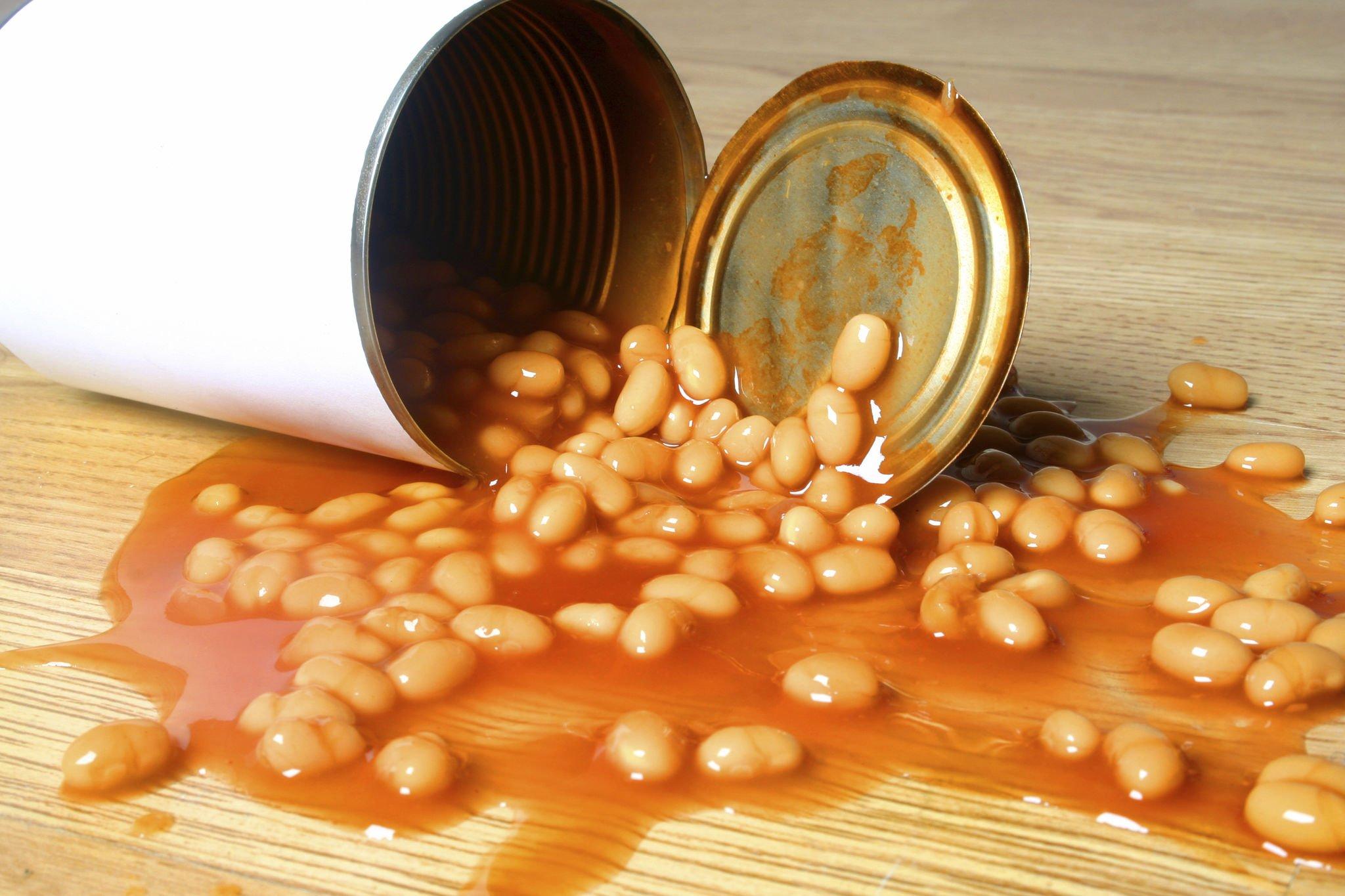
Imagine this: You’ve just popped open a can of your favorite beans. The plump legumes glisten, ready to be added to your culinary masterpiece. But what about that mysterious liquid surrounding them—that unassuming pool of bean brine? Can you really eat the liquid in canned beans?
Yes, you can eat the liquid in canned beans. The liquid in all canned beans is a mixture of water, salt, and the starch released from the beans themselves.
Welcome to the world of canned beans, where every drop of that liquid gold is worth a second thought. In this exploration, we’ll dive deep into the intriguing realm of bean brine. We’ll unveil its secrets, answer the age-old question of its edibility, and reveal the astonishing benefits it brings to your kitchen.
This is not just another article; it’s a culinary revelation. So, fasten your seatbelts, as we embark on a quest to uncover the tantalizing world of bean brine and its unexpected culinary wonders!
Introduction to Canned Beans and Bean Brine
Canned beans, those humble pantry staples, have long held a cherished place in kitchens worldwide. They offer convenience, versatility, and an easy way to add plant-based protein to your diet. But there’s more to canned beans than meets the eye.
Have you ever wondered about the liquid they’re packed in? This liquid, known as bean brine, has sparked curiosity among food enthusiasts and nutrition-conscious individuals alike. In this article, we’ll explore the world of canned beans and delve into the potential benefits of consuming bean brine.
The Basics of Canned Beans
Canned beans are a culinary treasure, loved for their convenience and taste. They are simply beans that have been cooked, usually in water, and then sealed in cans or jars. Common varieties include black beans, kidney beans, chickpeas, and pinto beans, among others. The canning process preserves their flavor and extends their shelf life, making them readily available for various dishes year-round.
Bean Brine Unveiled
Now, let’s turn our attention to bean brine. Bean brine is the liquid that surrounds the beans inside the can. It’s often overlooked, but it contains more than just water. Bean brine is a mixture of water, salt, and various soluble compounds that leach out of the beans during the canning process. These compounds include starches, proteins, and trace amounts of vitamins and minerals.
The Composition of Bean Brine
To truly understand the potential benefits of bean brine, let’s take a closer look at its composition.
Components of Bean Brine
Here’s what you’ll typically find in a can of bean brine:
| Component | Description |
| Water | The primary component, making up the majority of brine. |
| Sodium | Added for flavor and as a preservative. |
| Starches | Released from beans during cooking, contributing to thickness. |
| Proteins | Leach out from the beans, providing a subtle creaminess. |
| Vitamins and Minerals | Trace amounts present, including B vitamins and potassium. |
Nutritional Value of Bean Brine
Now that we’ve established that bean brine is safe to consume and can enhance your dishes, let’s take a closer look at its nutritional benefits.
| Nutrient | Amount per 100g |
| Calories | 3 kcal |
| Protein | 0.2g |
| Carbohydrates | 0.7g |
| Fat | 0g |
| Sodium | 460mg |
| Fiber | 0.2g |
Bean brine is low in calories and fat, making it a suitable option for those watching their calorie intake. It contains a small amount of protein and carbohydrates, contributing to its nutritional value.
However, it’s important to note that the sodium content is relatively high, so it should be used in moderation, especially for individuals with hypertension or other sodium-sensitive conditions.
Related: Are Canned Beans Lectin-Free?
Can You Eat the Liquid in Canned Beans?
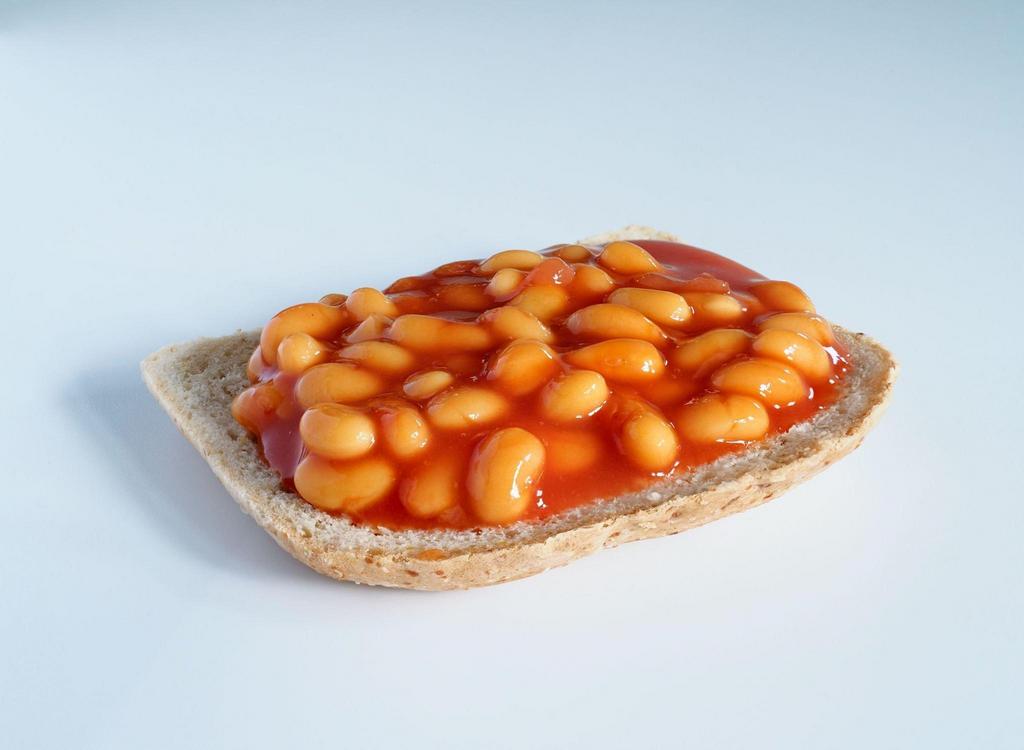
Now, let’s address the elephant in the room: the debate over whether it’s safe to consume bean brine.
The Safety Question
The safety of consuming bean brine is a topic that sparks a fair amount of discussion. Some people eagerly incorporate it into their culinary creations, while others approach it with caution. Why the discrepancy?
The main concern surrounding bean brine is its sodium content. Most canned beans are processed with added salt to enhance flavor and act as a preservative. This means that the brine can be quite salty, and excessive sodium intake is associated with various health risks, including high blood pressure and cardiovascular issues.
The Sodium Conundrum
If you’re watching your sodium intake, it’s essential to be mindful of how much bean brine you consume. The sodium levels can vary significantly between different brands and varieties of canned beans. Reading labels and choosing low-sodium options can help mitigate this concern.
Additives and Preservatives
Beyond sodium, some canned bean products may contain additives or preservatives. It’s advisable to check the ingredient list to ensure you’re comfortable with what’s included in your bean brine.
Culinary Uses of Bean Brine
Now that we’ve explored the composition and safety considerations, let’s get creative with bean brine in the kitchen.
Bean brine can be a secret weapon in your culinary arsenal. Its unique composition lends itself to a variety of culinary applications. Here are some ideas to spark your culinary imagination:
1. Vegan Mayonnaise Substitute
Whisk bean brine with a touch of oil and vinegar to create a vegan mayonnaise alternative. It’s creamy, tangy, and perfect for sandwiches, salads, and dipping.
2. Egg White Replacement
In vegan baking, bean brine can be whipped like egg whites to add structure and moisture to recipes. It’s an excellent choice for meringues and light, airy desserts.
3. Soups and Stews
Add bean brine to soups and stews for a subtle thickening effect and a hint of bean flavor. It’s a clever way to enhance the texture and nutritional value of your dishes.
4. Salad Dressing
Use bean brine as a base for salad dressings. Combine it with olive oil, herbs, and spices for a light and creamy vinaigrette.
5. Smoothies
Believe it or not, a small amount of bean brine can be blended into smoothies for added creaminess and a nutrient boost.
6. Marinades
Marinate tofu, tempeh, or vegetables in bean brine to infuse them with a savory, umami flavor.
7. Roasting Vegetables
Brush bean brine onto roasted vegetables for a flavorful glaze that caramelizes beautifully in the oven.
8. Gravy and Sauces
Bean brine can be incorporated into gravies and sauces to enhance their texture and create a rich, savory flavor.
Recipes to Try With Bean Brine
To get you started on your culinary adventure with bean brine, here are a couple of simple recipes that showcase its versatility:
Recipe 1: Vegan Bean Brine Aioli
Ingredients:
- 1/4 cup bean brine (from canned chickpeas or white beans)
- 1 tablespoon olive oil
- 1 teaspoon lemon juice
- 1 clove garlic, minced
- Salt and pepper to taste
Instructions:
- In a bowl, whisk together the bean brine, olive oil, lemon juice, and minced garlic.
- Season with salt and pepper to taste.
- Chill in the refrigerator for at least 30 minutes before serving.
- Use as a dip, spread, or salad dressing.
Recipe 2: Bean Brine Chocolate Mousse
Ingredients:
- 1/2 cup bean brine (from canned black beans)
- 1/4 cup cocoa powder
- 1/4 cup powdered sugar
- 1 teaspoon vanilla extract
Instructions:
- In a mixing bowl, whip the bean brine with an electric mixer until it forms stiff peaks.
- Gently fold in the cocoa powder, powdered sugar, and vanilla extract until well combined.
- Spoon the chocolate mousse into serving glasses and refrigerate for at least 2 hours before enjoying.
These recipes are just a glimpse of the culinary possibilities that bean brine offers. Experiment and have fun in the kitchen, and you’ll discover new and exciting ways to incorporate this underrated ingredient into your meals.
Health Benefits of Bean Brine Consumption
While bean brine may not boast the same nutritional profile as the beans themselves, it still offers several potential health benefits when consumed in moderation.
Gut Health and Fiber
Bean brine contains soluble fiber, which can promote digestive health. This type of fiber helps feed beneficial gut bacteria, supporting a balanced and healthy gut microbiome. A well-functioning gut can have a positive impact on your overall health, from digestion to immunity.
Weight Management
The soluble fiber in bean brine can also contribute to a feeling of fullness and satiety, potentially aiding in weight management by reducing the likelihood of overeating. Including bean brine in your meals may help you control your portions more effectively.
Nutrient Absorption
The presence of small amounts of vitamins and minerals in bean brine can contribute to your daily nutrient intake. While it’s not a significant source of these nutrients, every little bit counts, especially for those following plant-based diets.
Risks and Precautions Associated with Bean Brine Consumption
While there are potential benefits to consuming bean brine, it’s essential to be aware of some risks and precautions.
Sodium Content
As mentioned earlier, the sodium content in bean brine can be a concern for some individuals. Excessive sodium intake is linked to high blood pressure and other health issues. If you’re on a low-sodium diet or have hypertension, it’s wise to be cautious about your consumption of bean brine.
Moderation is Key
Like many things in life, moderation is key. While bean brine can be a valuable addition to your culinary repertoire, excessive consumption may not be advisable. Balance your intake and consider the sodium levels in other foods you consume throughout the day.
Check Labels
Different brands and varieties of canned beans can have varying levels of sodium in their brine. Be sure to read the labels and select options that align with your dietary preferences and restrictions.
Homemade Bean Brine
For those who want more control over the sodium content and additives in their bean brine, making it at home is an option. You can cook dried beans, save the cooking liquid, and adjust the seasoning to your liking. Homemade bean brine allows for customization and eliminates any concerns about unwanted additives.
Brands and Products Offering Bean Brine for Sale
If you’re interested in exploring the world of bean brine but prefer the convenience of a store-bought option, several brands and products offer canned beans with bean brine.
1. Eden Organic Beans
Eden Foods is known for its organic and natural products. They offer canned beans with minimal additives and use sea salt for seasoning.
2. Westbrae Natural Beans
Westbrae Natural specializes in organic and non-GMO products. They offer a range of canned beans with various flavor options, including low-sodium varieties.
3. Biona Organic Beans
Biona is a brand that focuses on organic and sustainably sourced products. They offer canned organic beans with a variety of options for health-conscious consumers.
4. Homemade Bean Brine
For the ultimate control over the ingredients and seasoning of your bean brine, making it at home is the best choice. You can adjust the salt and other flavorings to your preference and enjoy the freshest bean brine possible.
Conclusion
In conclusion, you can indeed eat the liquid in canned beans, and there are some good reasons to do so. Bean brine is not only safe but also a flavorful and nutritious addition to your culinary repertoire. By using it wisely in your cooking, you can elevate the taste of your dishes and make the most of this often-overlooked ingredient.
Remember to consume bean brine in moderation, especially if you’re watching your sodium intake. With a little creativity, you can turn bean brine into a secret weapon in your kitchen, adding depth and complexity to your favorite recipes. So, the next time you open a can of beans, don’t pour that liquid down the drain; savor it as a tasty and nutritious bonus!
FAQs on Safe to Drink Liquid from Canned Beans
Is it safe to eat the liquid in canned beans?
The safety of consuming bean brine largely depends on the brand and the ingredients used. It’s advisable to check the label for additives and sodium content.
What are the main nutritional benefits of bean brine?
Bean brine can be a good source of nutrients like fiber and certain minerals. It may aid in digestion and nutrient absorption.
Can I replace salt with bean brine in recipes?
Yes, bean brine can serve as a flavorful substitute for salt in various dishes, but it’s essential to adjust the quantity to your taste.
Are there any special considerations for individuals with dietary restrictions?
People with dietary restrictions, such as those on low-sodium diets, should be cautious when consuming bean brine and consider homemade versions with reduced salt.
What is the best way to store leftover bean brine?
To store leftover bean brine, transfer it to an airtight container and refrigerate it for up to a week. You can also freeze it for longer-term storage.


